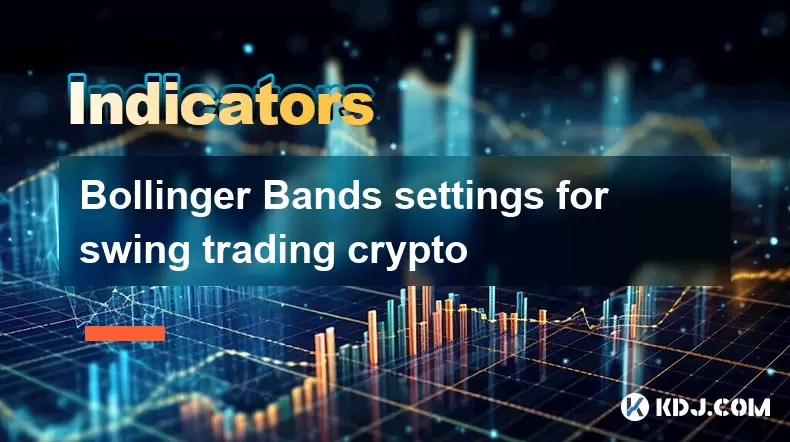-
 Bitcoin
Bitcoin $120400
1.77% -
 Ethereum
Ethereum $3615
7.90% -
 XRP
XRP $3.580
17.84% -
 Tether USDt
Tether USDt $1.001
0.06% -
 BNB
BNB $729.4
1.25% -
 Solana
Solana $179.9
5.04% -
 USDC
USDC $0.0000
0.01% -
 Dogecoin
Dogecoin $0.2311
8.22% -
 TRON
TRON $0.3226
4.04% -
 Cardano
Cardano $0.8490
12.85% -
 Hyperliquid
Hyperliquid $46.45
0.72% -
 Stellar
Stellar $0.4913
8.54% -
 Sui
Sui $4.027
2.00% -
 Chainlink
Chainlink $18.51
11.67% -
 Hedera
Hedera $0.2818
21.51% -
 Avalanche
Avalanche $24.03
7.40% -
 Bitcoin Cash
Bitcoin Cash $508.5
2.90% -
 Shiba Inu
Shiba Inu $0.00001496
3.24% -
 UNUS SED LEO
UNUS SED LEO $8.961
1.83% -
 Toncoin
Toncoin $3.264
3.13% -
 Litecoin
Litecoin $104.6
8.15% -
 Polkadot
Polkadot $4.389
6.11% -
 Uniswap
Uniswap $9.924
10.63% -
 Monero
Monero $337.9
0.49% -
 Pepe
Pepe $0.00001376
2.79% -
 Bitget Token
Bitget Token $4.830
2.46% -
 Ethena USDe
Ethena USDe $1.001
0.05% -
 Dai
Dai $1.000
0.02% -
 Aave
Aave $325.2
1.66% -
 Bittensor
Bittensor $423.7
-0.85%
Bollinger Bands settings for swing trading crypto
Bollinger Bands help crypto swing traders identify overbought/oversold levels and volatility squeezes, offering strategic entry points when combined with volume and momentum indicators.
Jul 16, 2025 at 08:35 pm

Understanding Bollinger Bands in the Context of Crypto Trading
Bollinger Bands are a widely used technical analysis tool developed by John Bollinger. They consist of three lines: a simple moving average (SMA) in the middle, and two standard deviation bands above and below it. These bands dynamically adjust to price volatility, making them particularly useful for swing trading cryptocurrencies, where prices can swing dramatically within short periods.
In crypto markets, which operate 24/7 and are highly sensitive to news events and macroeconomic factors, Bollinger Bands help traders identify overbought and oversold conditions. When the price touches or moves outside the upper band, it may signal an overbought condition, suggesting a potential pullback. Conversely, when the price hits or falls below the lower band, it might indicate an oversold scenario, hinting at a possible bounce.
Optimal Bollinger Band Settings for Swing Trading Crypto
The default setting for Bollinger Bands is 20 periods with 2 standard deviations, but this may not be ideal for all market conditions, especially in volatile crypto markets. For swing trading, adjustments are often necessary to better capture trends and reversals.
- Period Length: Increasing the period length to 25 or 30 can smooth out false signals caused by rapid price fluctuations.
- Standard Deviations: While most traders stick with 2 standard deviations, some find that using 1.5 or 1.8 can provide more responsive signals in fast-moving crypto markets.
- Moving Average Type: Although the default is SMA, experimenting with Exponential Moving Average (EMA) can offer quicker responses to price changes, which is crucial in swing trading.
It’s essential to backtest different settings on historical data before applying them to live trades.
How to Interpret Bollinger Band Squeezes in Crypto Markets
A Bollinger Band squeeze occurs when the bands contract tightly around the price, indicating low volatility. This pattern often precedes a significant price move, either up or down. In crypto swing trading, recognizing a squeeze can help anticipate breakouts.
- Look for a narrowing of the bands across multiple timeframes.
- Combine the squeeze with volume indicators like On-Balance Volume (OBV) to confirm the likelihood of a breakout.
- Use candlestick patterns such as engulfing candles or hammers near the bands to increase confidence in trade entries.
Swing traders can position themselves ahead of the breakout by placing pending orders just above the upper band or below the lower band once a squeeze is confirmed.
Combining Bollinger Bands with Other Indicators for Better Signals
Relying solely on Bollinger Bands can lead to false signals, especially in choppy or sideways crypto markets. To enhance accuracy, consider combining them with other tools:
- Relative Strength Index (RSI): Helps confirm overbought (above 70) or oversold (below 30) conditions when the price touches the bands.
- MACD (Moving Average Convergence Divergence): Useful for confirming trend direction and momentum when the price interacts with the bands.
- Volume Profile: Provides insight into key support/resistance levels where institutional activity might be concentrated.
Using these combinations allows swing traders to filter out noise and focus on high-probability setups.
Practical Steps for Setting Up Bollinger Bands on a Crypto Chart
Setting up Bollinger Bands correctly is crucial for effective swing trading. Here’s how to do it step-by-step on popular platforms like TradingView or Binance:
- Open your preferred trading platform and select the cryptocurrency you want to analyze.
- Navigate to the "Indicators" menu and search for Bollinger Bands.
- Adjust the period length to 25 or 30 instead of the default 20.
- Change the standard deviation value from 2 to 1.8 if needed for tighter signals.
- Optionally switch the moving average type to EMA for faster response times.
- Apply the settings and observe how the bands interact with recent price action.
- Overlay additional indicators like RSI or MACD for confluence.
Ensure the chart time frame aligns with your swing trading strategy—1-hour, 4-hour, or daily charts are commonly used.
Frequently Asked Questions
Q: Can Bollinger Bands be used effectively in bear markets?
Yes, Bollinger Bands can still be effective in bear markets by identifying oversold bounces or resistance zones. However, traders should combine them with momentum indicators to avoid false signals during strong downtrends.
Q: Should I use the same Bollinger Band settings for all cryptocurrencies?
No, different cryptocurrencies exhibit varying levels of volatility. It's advisable to customize settings based on each asset’s behavior through backtesting and observation.
Q: How do I know if a price touching the band is a reversal or continuation signal?
Look for candlestick patterns, volume spikes, and momentum divergence. A bullish engulfing pattern near the lower band with increasing volume suggests a reversal, while a strong close beyond the upper band may indicate continuation.
Q: Are Bollinger Bands suitable for intraday trading as well?
While they are commonly used for swing trading, Bollinger Bands can also work for intraday strategies with adjusted settings. Shorter time frames like 5-minute or 15-minute charts require tighter parameters and stricter risk management.
Disclaimer:info@kdj.com
The information provided is not trading advice. kdj.com does not assume any responsibility for any investments made based on the information provided in this article. Cryptocurrencies are highly volatile and it is highly recommended that you invest with caution after thorough research!
If you believe that the content used on this website infringes your copyright, please contact us immediately (info@kdj.com) and we will delete it promptly.
- Bitcoin Whale's $9.6B Galaxy Digital Move: Profit-Taking or Strategic Play?
- 2025-07-18 14:30:12
- Alchemy Pay, Crypto-Finance, and Hong Kong: A Budding Hub?
- 2025-07-18 14:30:12
- Dave Portnoy's XRP Regret: A Crypto Dump Disaster?
- 2025-07-18 15:10:12
- XRP Price Surges to 7-Year High: Expert Predictions and Market Analysis
- 2025-07-18 15:10:12
- Crypto Market Cap Nears $4T: Can It Rival the Biggest Companies?
- 2025-07-18 14:50:12
- Binners Alpha, TrutaAI, Andken ERA: A New Era?
- 2025-07-18 14:50:12
Related knowledge

Advanced RSI strategies for crypto
Jul 13,2025 at 11:01am
Understanding the Basics of RSI in Cryptocurrency TradingThe Relative Strength Index (RSI) is a momentum oscillator used to measure the speed and chan...

Crypto RSI for day trading
Jul 12,2025 at 11:14am
Understanding RSI in the Context of Cryptocurrency TradingThe Relative Strength Index (RSI) is a momentum oscillator used to measure the speed and cha...

Crypto RSI for scalping
Jul 12,2025 at 11:00pm
Understanding RSI in the Context of Crypto TradingThe Relative Strength Index (RSI) is a momentum oscillator widely used by traders to measure the spe...

What does an RSI of 30 mean in crypto
Jul 15,2025 at 07:07pm
Understanding RSI in Cryptocurrency TradingRelative Strength Index (RSI) is a momentum oscillator widely used in cryptocurrency trading to measure the...

What does an RSI of 70 mean in crypto
Jul 13,2025 at 06:07pm
Understanding the RSI Indicator in Cryptocurrency TradingThe Relative Strength Index (RSI) is a widely used technical analysis tool that helps traders...

Does RSI work in a bear market for crypto
Jul 16,2025 at 01:36pm
Understanding RSI in Cryptocurrency TradingThe Relative Strength Index (RSI) is a momentum oscillator used by traders to measure the speed and change ...

Advanced RSI strategies for crypto
Jul 13,2025 at 11:01am
Understanding the Basics of RSI in Cryptocurrency TradingThe Relative Strength Index (RSI) is a momentum oscillator used to measure the speed and chan...

Crypto RSI for day trading
Jul 12,2025 at 11:14am
Understanding RSI in the Context of Cryptocurrency TradingThe Relative Strength Index (RSI) is a momentum oscillator used to measure the speed and cha...

Crypto RSI for scalping
Jul 12,2025 at 11:00pm
Understanding RSI in the Context of Crypto TradingThe Relative Strength Index (RSI) is a momentum oscillator widely used by traders to measure the spe...

What does an RSI of 30 mean in crypto
Jul 15,2025 at 07:07pm
Understanding RSI in Cryptocurrency TradingRelative Strength Index (RSI) is a momentum oscillator widely used in cryptocurrency trading to measure the...

What does an RSI of 70 mean in crypto
Jul 13,2025 at 06:07pm
Understanding the RSI Indicator in Cryptocurrency TradingThe Relative Strength Index (RSI) is a widely used technical analysis tool that helps traders...

Does RSI work in a bear market for crypto
Jul 16,2025 at 01:36pm
Understanding RSI in Cryptocurrency TradingThe Relative Strength Index (RSI) is a momentum oscillator used by traders to measure the speed and change ...
See all articles

























































































